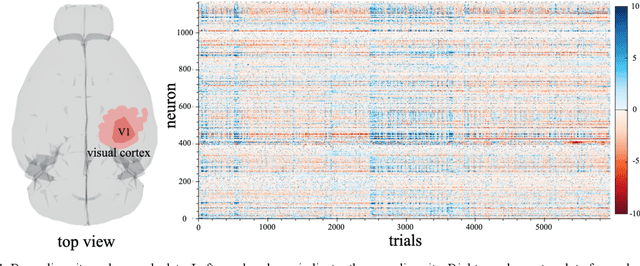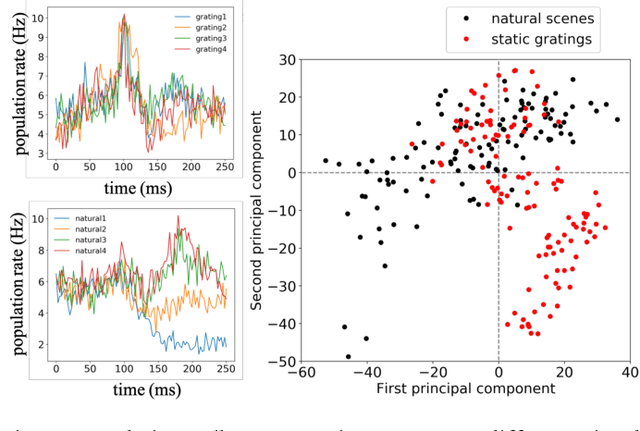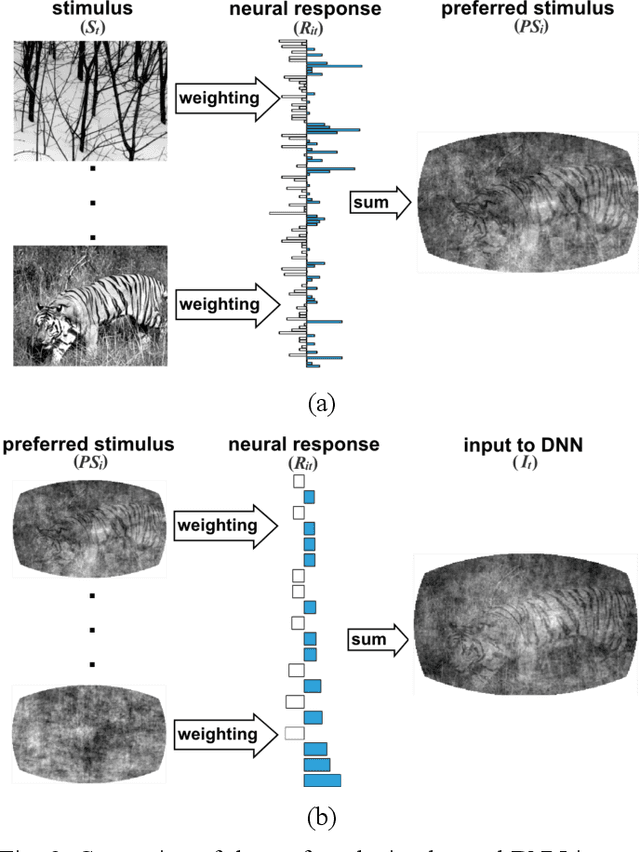Decoding Neural Responses in Mouse Visual Cortex through a Deep Neural Network
Paper and Code
Oct 26, 2019



Finding a code to unravel the population of neural responses that leads to a distinct animal behavior has been a long-standing question in the field of neuroscience. With the recent advances in machine learning, it is shown that the hierarchically Deep Neural Networks (DNNs) perform optimally in decoding unique features out of complex datasets. In this study, we utilize the power of a DNN to explore the computational principles in the mammalian brain by exploiting the Neuropixel data from Allen Brain Institute. We decode the neural responses from mouse visual cortex to predict the presented stimuli to the animal for natural (bear, trees, cheetah, etc.) and artificial (drifted gratings, orientated bars, etc.) classes. Our results indicate that neurons in mouse visual cortex encode the features of natural and artificial objects in a distinct manner, and such neural code is consistent across animals. We investigate this by applying transfer learning to train a DNN on the neural responses of a single animal and test its generalized performance across multiple animals. Within a single animal, DNN is able to decode the neural responses with as much as 100% classification accuracy. Across animals, this accuracy is reduced to 91%. This study demonstrates the potential of utilizing the DNN models as a computational framework to understand the neural coding principles in the mammalian brain.
 Add to Chrome
Add to Chrome Add to Firefox
Add to Firefox Add to Edge
Add to Edge